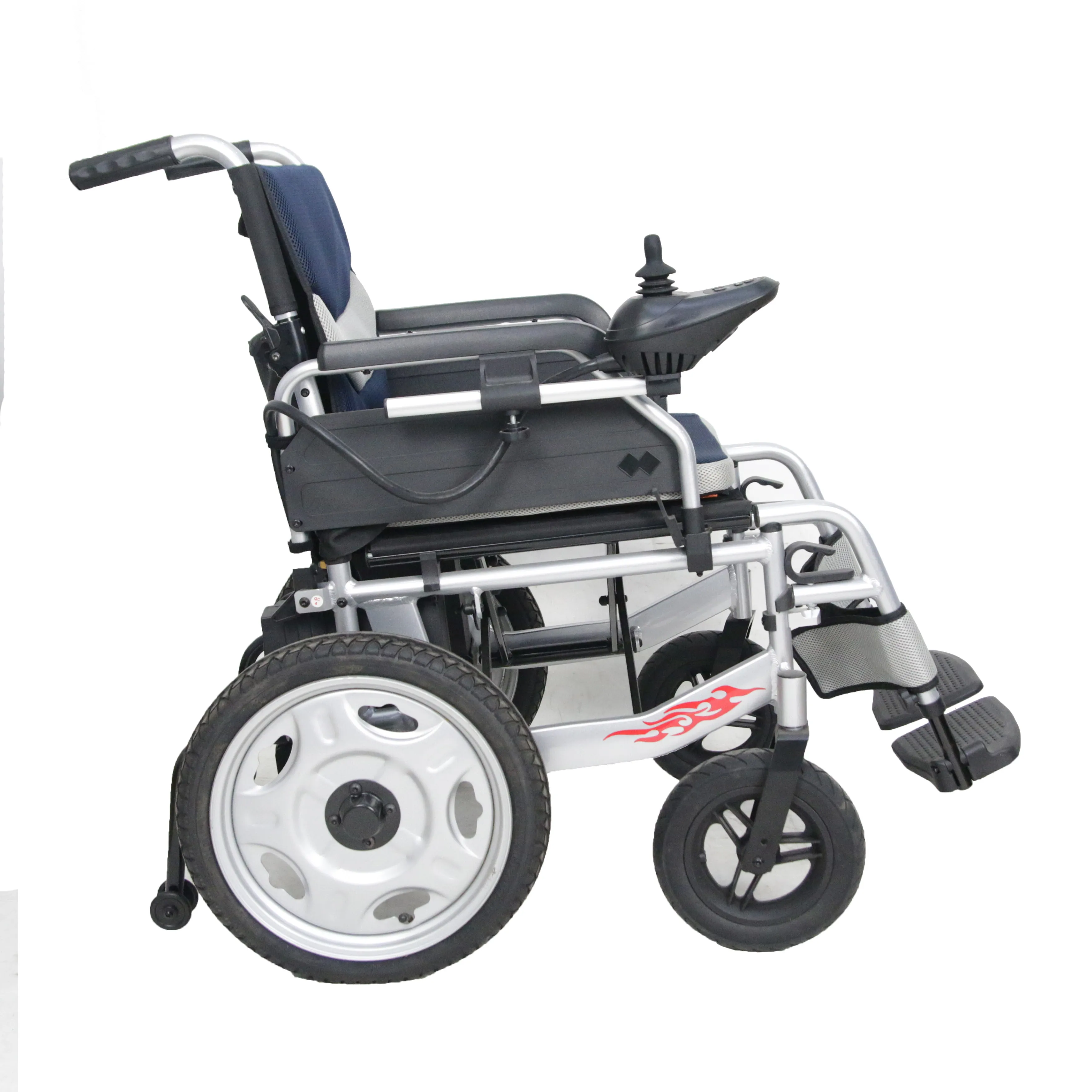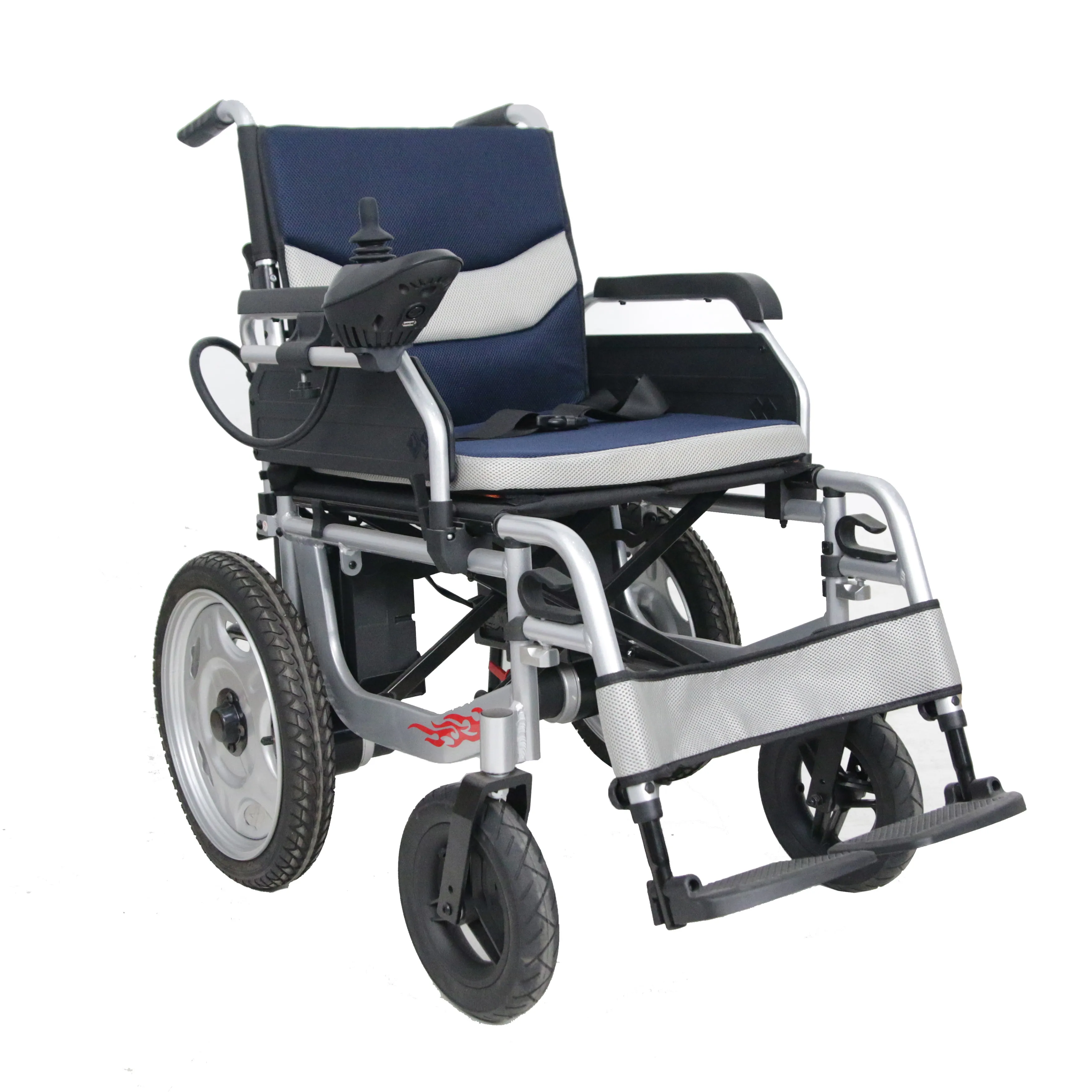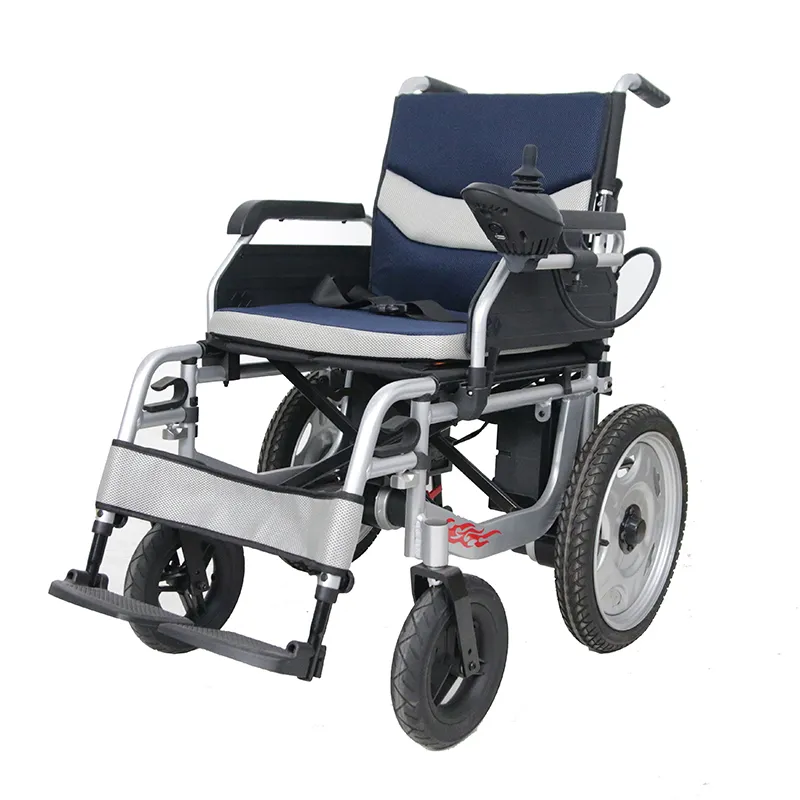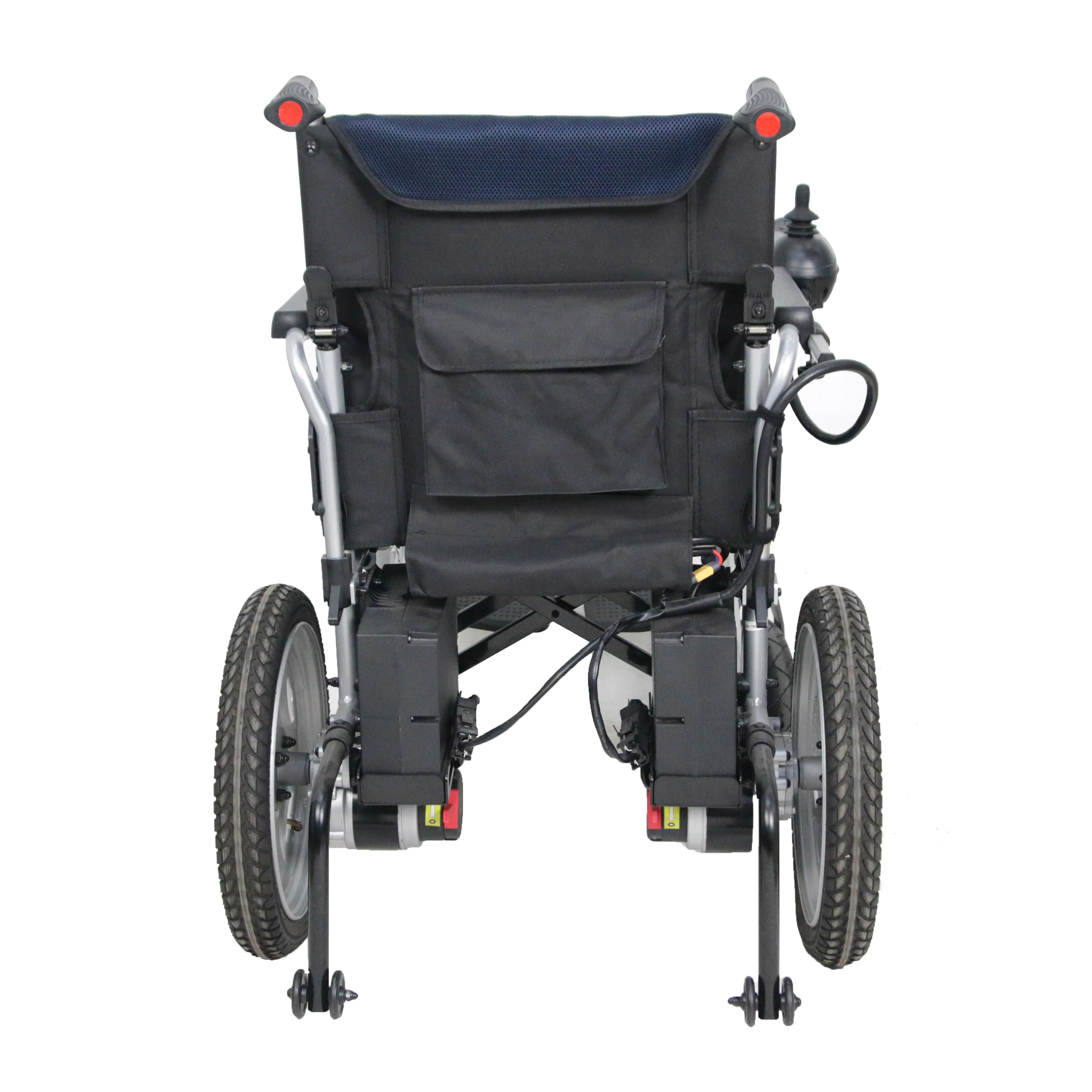In recent years, with the increasing aging population and the growing needs of people with limited mobility, electric wheel chairs have become a crucial device for helping them travel independently. Compared to traditional manual wheelchairs, electric wheel chairs are widely popular due to their ease of operation, energy-saving features, and intelligent assistance.
In daily use, many users encounter a frustrating problem: "My electric wheelchair suddenly stopped moving." This seemingly simple problem can be caused by a variety of complex reasons.
This article will provide an in-depth analysis of electric wheelchair structure, common fault points, diagnostic procedures, maintenance recommendations, and other aspects to help users understand why their electric wheel chairs stop moving and provide professional and effective solutions.

How Electric Wheel chairs Work: Do You Know?
To understand why an electric wheelchair may suddenly stop working, you must first have a basic understanding of its working principles.
An electric wheelchair consists of the following key components:
• Battery System: The power supply core, typically a lithium-ion or lead-acid battery.
• Motor System: Primarily a brushless DC motor, it drives the wheelchair forward, backward, and turns.
• Control system: Includes joystick (joystick), main control board, circuit board, etc., used to control direction, speed, and functions.
• Electromagnetic brake: Ensures the user maintains a stable position when the wheelchair stops.
• Wiring and sensors: Wiring that connects various components and facilitates auxiliary functions such as inclination sensors and load cells.
• Structure and frame: Bears the user's weight and supports the power system.
An electric wheelchair can only operate stably when these systems function in harmony. If any one of them malfunctions, the entire vehicle may "stop working."

Why is my electric wheelchair not moving?
Ten possible reasons why an electric wheelchair may not be moving:
1. Depleted or aged batteries
2. Power not properly turned on or poor contact
3. Faulty or damaged controller
4. Electromagnetic brake not released
5. Burned or damaged motor
6. Open or shorted control circuit
7. Overload protection activated
8. Power loss on the lithium battery protection board
9. Software setting error
10. Accidental locking or activation of the anti-theft function
1. Depleted or aged batteries
The most common cause is a battery problem. If the battery is depleted, the wheelchair will naturally stop functioning. Furthermore, batteries typically have a lifespan of 1-3 years, and aged batteries may not be able to effectively provide power even if they appear fully charged.
How to determine if the wheelchair is working properly:
• Check the battery indicator or display panel;
• Use a spare battery to test whether the wheelchair can start properly.
Solution:
• Replace aged batteries promptly;
• Ensure the charger is working properly and the battery is fully charged.
2. Power not properly turned on or poor contact
Some users forget to turn on the main power supply during use, or the power switch is loose, causing poor contact.
How to Identify:
• Check if the power is on;
• Check if the indicator light is on.
Suggested Solution:
• Make sure the power button is fully turned on;
• Check the switch wiring or replace a damaged power button.
3. Controller Fault or Damage
The joystick controller is the primary interface between the user and the wheelchair. If its internal circuit board fails or the program crashes, the wheelchair will become unresponsive.
How to Identify:
• The controller panel is unresponsive;
• The controller panel alarms or flashes an abnormality code.
Suggested Solution:
• Power off and restart the controller;
• Check the error code and troubleshoot the problem according to the manual;
• Contact the manufacturer for repair or replacement of the controller.
4. Electromagnetic Brake Not Released
The electromagnetic brake automatically locks in the event of a power outage or malfunction to prevent the wheelchair from rolling away unexpectedly. However, this may lead the user to mistakenly believe the wheelchair is malfunctioning.
How to Identify:
• Try to push the wheelchair manually, but it will not move at all;
• No "click" sound indicating the brake is released is heard.
Solution:
• Check the electromagnetic brake cable for loose connections;
• Check the brake settings in the controller settings;
• Contact a professional to inspect the brake system.
5. Motor Burnout or Damage
Prolonged overload, water exposure, or dust intrusion can cause motor damage.
How to Identify:
• The electric wheelchair does not move when started;
• The controller is functioning normally but the motor is unresponsive;
• There is an unusual noise or burning smell.
Solution:
• Check the motor connection for loose connections;
• Replace a damaged motor;
• Avoid excessive loads and water exposure.

6. Control Line Open or Short Circuit
Damage to the line due to aging internal cables, rat bites, or loose connections can prevent signal transmission.
How to Identify:
• Some functions function normally, but some operations do not respond;
• The device intermittently recovers after tapping or moving the line.
Solution:
• Use a multimeter to check wire connectivity;
• Replace aging or damaged cables;
• Have a professional electrician perform repairs.
7. Overload Protection Triggered
Electric wheel chairs generally have built-in overload protection mechanisms. If overloaded on a slope, stuck in an obstacle, or other conditions occur, the system may automatically shut down for protection.
How to Identify:
• Sudden power outage during operation;
• The controller sounds an alarm but there are no other signs of a fault.
Solution:
• Push the wheelchair back to level ground, turn off the power, and wait 10 minutes;
• Restart the wheelchair to see if normal operation returns;
• Check if the load exceeds the rated value.
8. Lithium Battery Protection Board Power Failure
Modern lithium batteries have built-in BMSs (Battery Management Systems). When abnormal current flow or excessive temperature is detected, the battery will automatically shut down for protection.
How to Identify:
• The battery indicator is on, but the device does not power on;
• Use another battery and the device will function normally.
Solution:
• Recharge the battery using a professional charger;
• Replace the battery or the battery protection board.
9. Software Setting Error
Some smart electric wheelchairs support user-defined control parameters. Incorrect settings, such as speed limits or prohibited driving modes, can cause the wheelchair to become immobile.
How to identify the cause:
• The controller becomes unresponsive after powering on;
• The user has previously adjusted settings or used the remote control.
Solution:
• Restore factory settings;
• Adjust parameters according to the user manual;
• Contact the brand's after-sales technical support.
10. Accidental Lock or Anti-Theft Function Activated
Some high-end electric wheel chairs have an anti-theft lock function, which is set via the remote control or app. If the lock function is accidentally activated, the wheelchair will become immobile.
How to identify the cause:
• The indicator light is normal, but the wheelchair is not moving;
• Unlocking the wheelchair with the remote control is ineffective.
Solution:
• Check if the remote control has been accidentally locked;
• Reset or replace the remote control batteries;
• Unlock the wheelchair using the app.

How to self-diagnose electric wheelchair malfunctions?
To help users quickly troubleshoot problems, please follow the steps below:
1. Check that the power is on.
2. Verify that the battery is charged.
3. Observe whether the controller is alarming or displays a fault code.
4. Try replacing the controller/battery to eliminate the source of the problem.
5. Manually push the wheelchair to determine if the brakes are locked.
6. Check for any incorrect locking/speed limit settings.
7. Observe for any burning smell or unusual noises.
If self-inspection fails, it is recommended to contact the manufacturer or a professional technician immediately for inspection.
Daily Maintenance Tips to Prevent Electric Wheelchair Malfunctions
• Charge regularly to prevent battery overdischarge;
• Keep out of rain and avoid operating in water;
• Regularly check cable and screw connections;
• Ensure the charger and battery are compatible;
• Avoid frequent uphill and downhill riding or overloading;
• Have a professional perform a system maintenance check every 3-6 months.
If your electric wheelchair stops working, don't panic!
"Why is my electric wheelchair not working?" This isn't just a simple user question; it affects the user's daily quality of life and safety. As high-precision electronic devices, electric wheel chairs can experience operational failures from a variety of sources—batteries, motors, controllers, electromagnetic brakes, and even software settings.
For the average user, the key is to develop a preliminary diagnosis, promptly identify the problem, and troubleshoot each issue item by item using the methods provided in this article. If the problem remains unresolved, contact professional after-sales service to avoid unauthorized disassembly, which could cause further damage.
Electric wheel chairs bring freedom and dignity, and proper use and regular maintenance are crucial safeguards for maintaining this freedom.
What products does Dayang Medical supply?
Our company offers a wide range of medical products designed to improve mobility and healthcare. The product catalog includes electric wheel chairs, manual wheelchairs, sports wheelchairs, commodes, walkers, hospital beds, shower chairs, and walking sticks. With strong R&D capabilities, we can also provide customized designs and OEM solutions to meet international buyers' demands.
As a professional medical equipment manufacturer in China, Dayang Medical supplies wholesale and retail orders at competitive prices.










